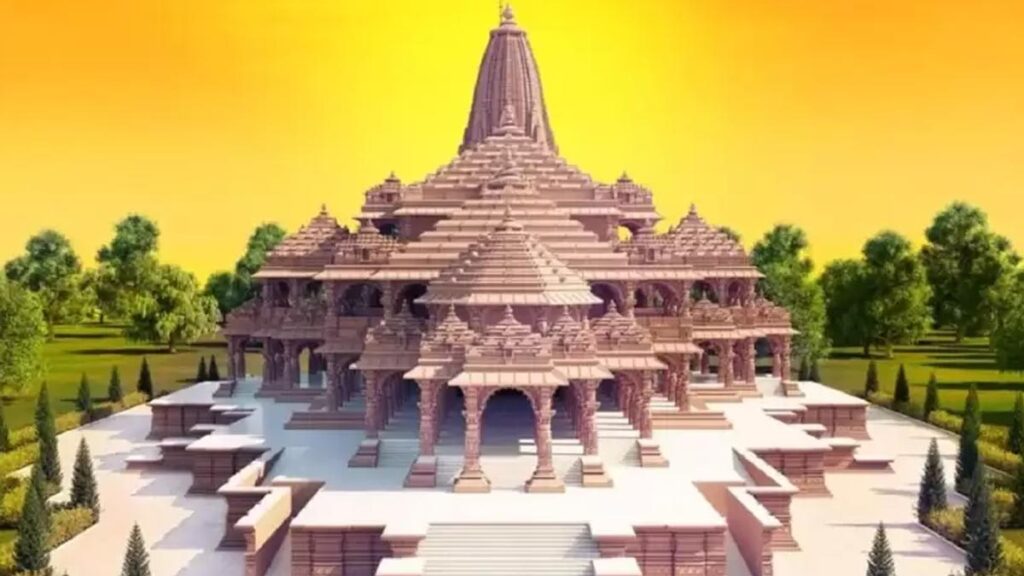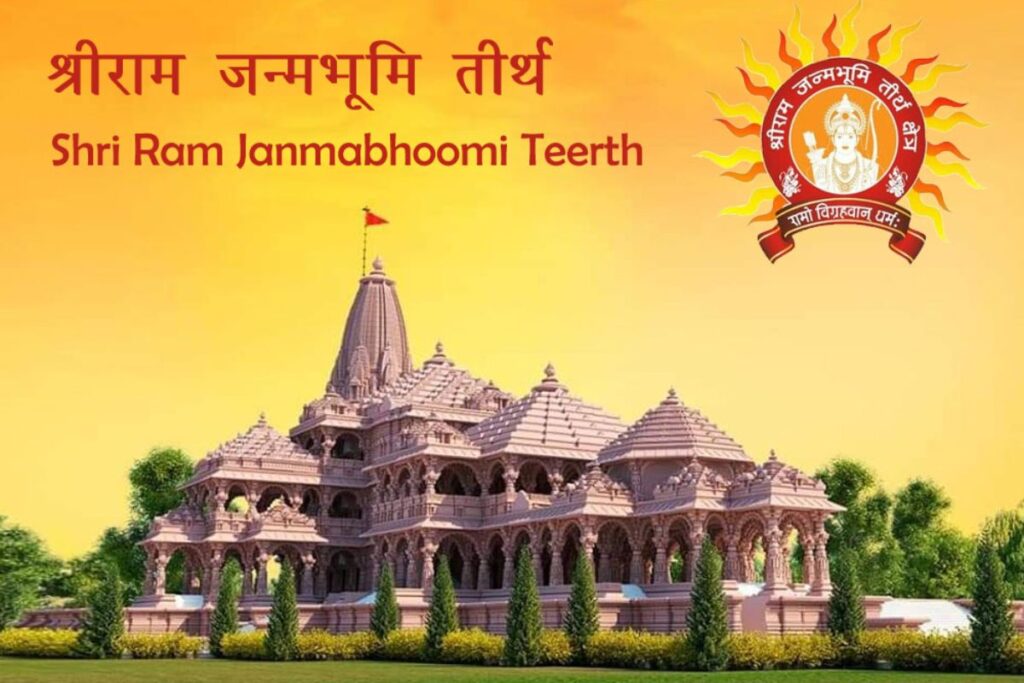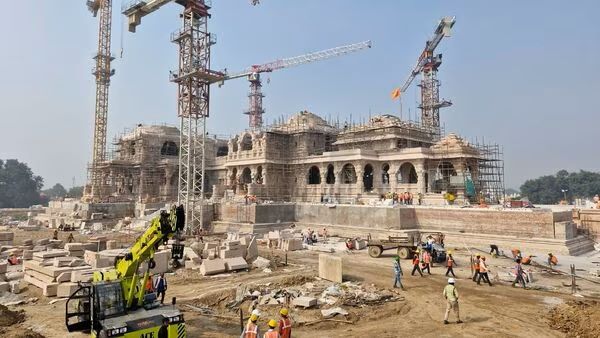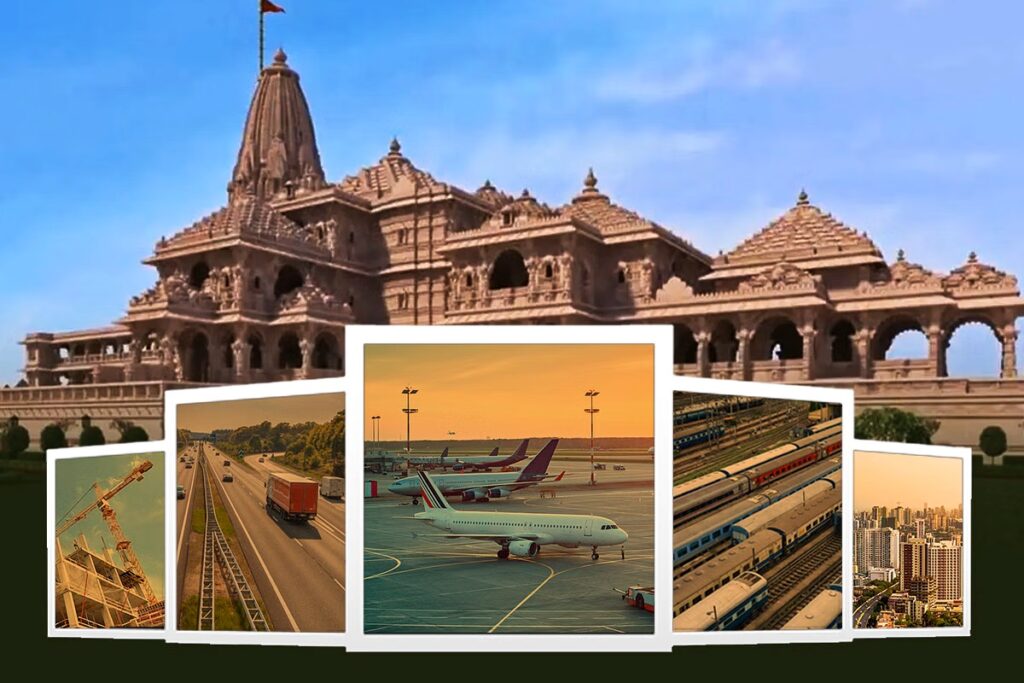Explore the architectural marvel’s key features of Shri Ram Janmabhoomi Mandir Ayodhya
The much-anticipated inauguration of the Ayodhya Ram Mandir is on the horizon, promising a momentous occasion steeped in history and spirituality. As Prime Minister Narendra Modi and other dignitaries gather for the inauguration on January 22, this sacred space is not merely a structure but a reservoir of faith and tradition embedded in the heart of India for centuries. Delve into this article to explore the architectural marvel’s key features that define the essence of the Shri Ram Janmabhoomi Mandir (Temple).
1. Architectural Heritage:
The original design for the Ram Mandir, conceptualized in 1988 by the venerable Sompura family of Ahmedabad, has undergone transformative changes in 2020. Rooted in the principles of Vastu Shastra and the Shilpa Shastras, this architectural gem is a testament to the Sompuras’ legacy, spanning over 15 generations and encompassing the design of more than 100 temples worldwide.
2. Traditional Nagar Style:
The Mandir proudly stands in the traditional Nagar architectural style, an embodiment of one of the two main styles of Hindu temple architecture. This style, characterized by stone or brick construction on a square or rectangular plane with a central shikhara, is adorned by small towers known as Mukha Mandapa.

The built-up area of the Ram mandir is given in the below table:
| Total area | 2.7 Acres |
| Total built-up area | 57,400 Sq.feet |
| Total length of the temple | 360 feet |
| Total width of the temple | 235 feet |
| Total height of temple (including peak) | 161 feet |
| Total floors | 3 |
| Height of each floor | 20 feet |
| No. of columns in ground floor | 160 |
| No. of columns in first floor | 132 |
| No. of columns in second floor | 72 |
| No. of pavilions | 5 |
| No. of gates in the temple | 12 |
3. Dimensions:
The grandeur of the Ram Mandir unfolds with impressive dimensions. Stretching east-west for 380 feet, boasting a width of 250 feet, and reaching a majestic height of 161 feet, the temple’s three-storied structure stands as a tribute to divine proportions.
4. Three-Storied Marvel:
Each of the three floors of the temple rises to a height of 20 feet, contributing to the overall splendour and majesty of the structure. This multi-storied marvel serves as a physical embodiment of the spiritual ascent that devotees experience within its hallowed walls.
5. Devotee Access:
Following the consecration ceremony of Ram Lalla in the sanctum-sanctorum on January 22, the temple will open its doors to devotees from January 24. This marks the culmination of a journey that has spanned centuries, inviting pilgrims to witness and partake in the divine energy that permeates the sacred space.
6. Shri Ram Janmabhoomi Teerth Kshetra Trust:

The meticulous construction and management of the Shri Ram Janmabhoomi Temple fall under the purview of the Shri Ram Janmabhoomi Teerth Kshetra Trust. Entrusted with the realization of this spiritual haven, the trust ensures that every aspect aligns with the revered traditions and cultural significance.
7. Estimated Cost:
The financial commitment to this monumental project is significant, with an estimated cost ranging between ₹1,400 crore to ₹1,800 crore. This investment underscores the dedication to creating a temple that not only stands as an architectural marvel but also as a symbol of cultural continuity and spiritual significance.
8. Different zones and regions of Ram Mandir in Ayodhya

The Ayodhya Ram Mandir, spanning a sacred expanse of 70 acres, is not merely a temple but a sprawling canvas of mythological significance. As devotees traverse this divine landscape, they encounter distinct zones and regions, each echoing the sacred resonance of Lord Rama’s birthplace.
a) Main Temple Pavilions:
At the heart of the sacred expanse stand the main temple’s five pavilions, each bestowed with unique significance:
- Nritya Pavilion: Resonating with the divine dance of Lord Rama, this pavilion celebrates the rhythmic essence of spirituality.
- Colour Pavilion: Infused with vibrant hues, this space embodies the spectrum of emotions and moods that define the spiritual journey.
- Sabha Pavilion: Symbolizing congregational gatherings, this pavilion invites devotees to partake in collective spiritual discourse.
- Prayer Pavilion: A sanctuary for introspection and devotion, this pavilion serves as a haven for solitary communion with the divine.
- Kirtan Pavilion: Echoing devotional melodies, this pavilion encapsulates the musical celebration of Lord Rama’s glory.
b) Divinely Defined Zones:
| Shri Ram Kund | Yagyashala |
| Karma Kshetra | Anusthaan Mandap |
| Hanuman Gadhi | Veer Maruti Vishal Pratima |
| Shri Ram Lala Purakalik Darshan Mandal | Janmbhoomi Sangrahalaya |
| Shri Kamm Keerti | Satsang Bhawan Sabhagar |
| Guru Vashistha Peethika | Center of Study For Research |
| Bhakti Teela | Special Peace Zone |
| Tulsi | Ramleela Center/Open Theatre |
| Ram Darbar | Multifunctional Community Center |
| Mata Kaushalya Vatsalya Mandal | Exhibition Center |
| Ramangan | TV/Cinema/AV Based Show Theater |
| Ramayan | Library/Reading Room |
| Maharshi Valmiki | Archives & Research Center |
| Ramashrayam | Boarding/Lodging/Waiting Area |
| Shri Dashrath | Cow Shelter |
| Laxman Vatika | Lily Pond & Musical Fountain |
| Lav Kush Nikunj | Activity Area For Children |
| Maryada Kunj | Special Guest Residential Area |
| Bharat-Prasad Mandar | Bhog/Prasad Distribution Area |
| Mata Sita Rasoi Annakshetra | Large Food Shelter |
| Deepstambh | Lamp Tower in front of Singhdwar |
9. Modern Facilities/Amenities in Ram Temple Premises:

- Multipurpose Distribution and Operations Room: Equipped for versatile functions, facilitating seamless coordination and operations within the temple complex.
- Bank/ATM: Providing convenient financial services for pilgrims and visitors within the temple premises.
- Essential Public Utilities: Toilets, bathrooms, and washrooms to ensure basic amenities for the comfort of devotees.
- Emergency Medical Facilities: Medical assistance is readily available, catering to any unforeseen health emergencies.
- Ramps/Lifts for Senior Citizens: Ensuring accessibility for all, with facilities designed to accommodate the needs of senior citizens and those with mobility challenges.
- Solar Energy Panels and Power Back-Ups: Incorporating sustainable energy solutions through solar panels, supplemented by power backups for uninterrupted services.
- Pilgrim Facility Center: A dedicated centre to address the diverse needs of pilgrims, offering information, guidance, and support services.
- Pilgrim/Visitor Management System: Streamlining the entry and exit processes, ensuring efficient management of pilgrims and visitors within the temple complex.
10. Interesting Features of Ram Mandir in Ayodhya:
- Architectural Marvel: A three-story structure with each floor standing at an impressive height of 20 feet, showcasing intricate craftsmanship and design.
- Pillars and Gates: The temple boasts a total of 392 pillars and 44 gates, adding to its grandeur and symbolic significance.
- Deity Placement: The main sanctum will house the deity of Shri Ram Lalla Sarkar in a child form, while the first floor will feature the divine Shri Ram Darbar.
- Entrance Details: Pilgrims will enter from the east side, ascending 32 stairs from Singhdwar, symbolizing a sacred journey towards spiritual elevation.
Additional Features Enhancing the Holistic Appeal of Ayodhya Ram Mandir

- Perkota Security: The temple is fortified with Perkota both inside and outside, ensuring a robust security infrastructure for the protection of devotees and the sacred premises.
- Incremental Expansion Strategy: The architectural vision for the Ram Mandir includes an incremental expansion plan for the next fifty years, ensuring adaptability to evolving needs while preserving the sanctity of the structure.
- Three-Level Tree Plantation: A unique approach to environmental sustainability, with a three-level tree plantation surrounding the temple. This strategic greenery serves as a natural shield against seasonal dust and storms, contributing to the overall well-being of the temple and its surroundings.
- Special Security Complex: A dedicated security complex has been implemented to mitigate potential risks and ensure the safety of the temple, pilgrims, and the sacred artefacts housed within.
- Astrologically Aligned Flower Garden: The temple premises feature a meticulously planned flower garden and plantation based on astrological constellations. This thoughtful landscaping adds a spiritual and aesthetic dimension to the surroundings.
- Vigilance Towers: Vigilance towers strategically positioned on all four sides of the temple enhance surveillance capabilities, contributing to the overall security infrastructure.
- Mammoth Memorials for Martyrs: Paying homage to the sacrifices of martyrs, the temple complex features mammoth memorials, serving as a poignant reminder of the valour and dedication of those who have served the nation.
- Surrounding Temples: The main temple in Ayodhya is harmoniously complemented by four surrounding temples dedicated to the Sun God, Goddess Bhagwati, Lord Ganesha, and Lord Shiva. These temples collectively enrich the spiritual ambience of the entire complex.
- Historical Presence of Sitakoop: A testament to the mythological period, the presence of Sitakoop near the temple adds a historical dimension, connecting the present to the revered past.
- Proposed Temples: Future expansion plans include temples dedicated to Maharishi Valmiki, Maharishi Vashishtha, Maharishi Vishwamitra, Maharishi Agastya, Nishadraj, Mata Shabari, and Rishipatni Devi Ahilya, contributing to the cultural and spiritual diversity of the temple complex.
Inaugurating a new chapter in the tapestry of faith and tradition, the Ayodhya Ram Mandir emerges as a sublime testament to the seamless fusion of spiritual heritage and modernity. Spanning 70 acres, this sacred expanse unfolds with architectural marvels and symbolic elements intricately designed by the esteemed Sompura family. Beyond its impressive dimensions and pavilions, the temple embraces a holistic approach, incorporating modern facilities such as multipurpose rooms, banking services, and medical facilities to enhance the pilgrimage experience.
Imbued with environmental consciousness, security measures, and tributes to martyrs, the temple becomes a living embodiment of cultural continuity. As the main temple is surrounded by four devoted shrines and plans for additional temples, including those dedicated to revered sages and deities, the Ayodhya Ram Mandir beckons devotees into a spiritual odyssey that seamlessly intertwines the timeless with the contemporary, creating a haven that transcends the boundaries of time and echoes with the eternal spirit of Lord Rama’s birthplace.
Write with us✍?
TeamUgtWorld warmly welcomes everyone! If you have something on your mind that you’d like to write about, we invite you to publish your thoughts on our platform @Ugtworld. To learn more, please click on the link provided below.


